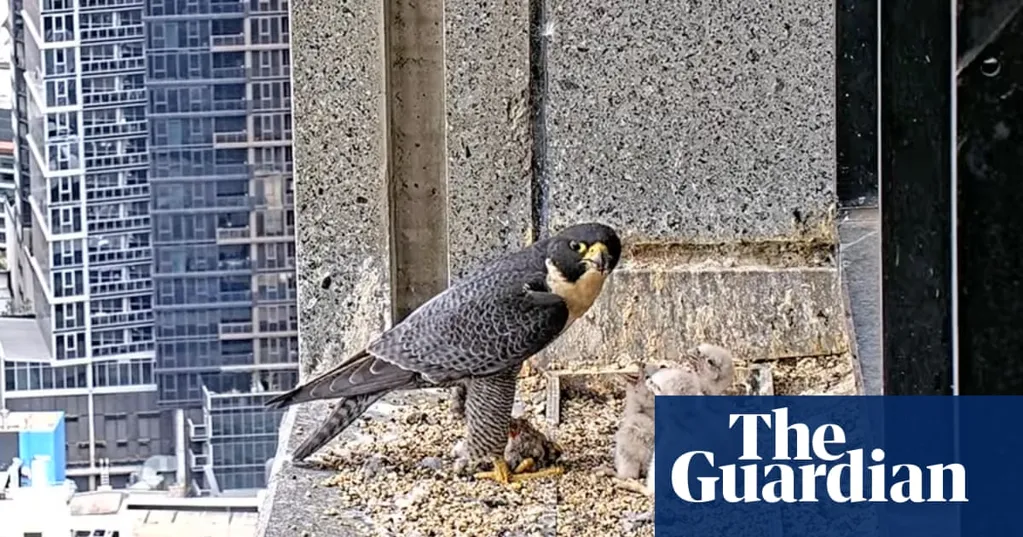Thousands of viewers have already tuned in to see a fluffy trio of falcon chicks born atop a Melbourne skyscraper, but the real cliffhanger is yet to come.
In their lofty nest on top of a Melbourne skyscraper, three peregrine falcon chicks hatched from three eggs, with the first tiny beak appearing on 30 September.
Over the next few weeks, teetering from a ledge 150m above 367 Collins Street, the birds will learn to fly. It's heart-in-mouth viewing, and as the big day approaches - in early November - the falcon livestream will begin popping up in the corner of screens in office buildings around the country, with tens of thousands of viewers expected to tune in.
"People get very excited waiting for the day when the first one flies," says peregrine expert Dr Victor Hurley. "I apologise to business managers the world over, because productivity does collapse. In the lead up to fledging there's almost permanent watch parties going on."
First, the birds will spend "an inordinate amount of time running up and down the ledge, flapping," he says. Then, the adults will start reducing their food, and might fly past the ledge with a dead starling, or a pigeon, Hurley says, almost taunting the young with food.
Sometimes the fledglings will hover for a bit first, before ultimately taking the plunge.
"It's a dangerous environment," Hurley says, "if they fledge early it's asking for trouble.
"The longer they take, the stronger they are, the lighter they are, the better their first flight will be."
It's gripping TV, and the live broadcast from 367 Collins is one of many across the country, each attracting its own dedicated band of viewers.
Birdlife Australia's EagleCAM offers a birds-eye view of sea eagles and their chicks (two this year) in their nest at Newington Nature Reserve near the Parramatta river in Sydney. Multiple cameras, microphones and infrared light set up high in a scribbly gum offer 24-hour viewing of the bird's breeding season.
The Daintree Rainforest Observatory offers a live feed of ospreys in their nest atop a 55m high canopy crane, set against the majestic rainforest backdrop. For ospreys with an ocean ambience, Friends of Osprey in South Australia, provides live access to a nest on a barge in Port Lincoln.
What's the appeal of wildlife webcams? It's unlimited streaming, says Hurley, with plenty of drama and "no ads".
